Designated 1966 Surface elevation 86 m | Basin countries United States Area 52.61 km² | |
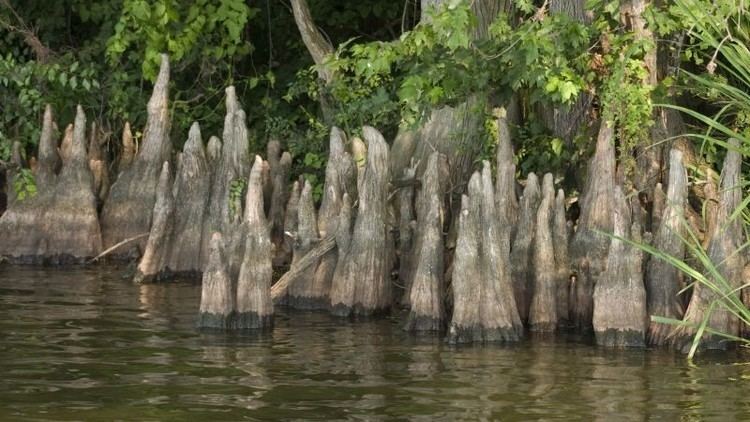 | ||
Fishing reelfoot lake
Reelfoot Lake is a shallow natural lake located in the northwest portion of U.S. state of Tennessee, in Lake and Obion counties. Much of it is really more of a swamp, with bayou-like ditches (some natural, some man-made) connecting more open bodies of water called basins, the largest of which is called Blue Basin. Reelfoot Lake is noted for its bald cypress trees and its nesting pairs of bald eagles. It is the site of Reelfoot Lake State Park. Lake Isom, a similar, smaller lake to the immediate south, is a National Wildlife Refuge area.
Contents
- Fishing reelfoot lake
- Big black crappie of spring reelfoot lake tn krappie kings s2 eps07
- History
- Nightriders
- Reelfoot Lake today
- The name
- References
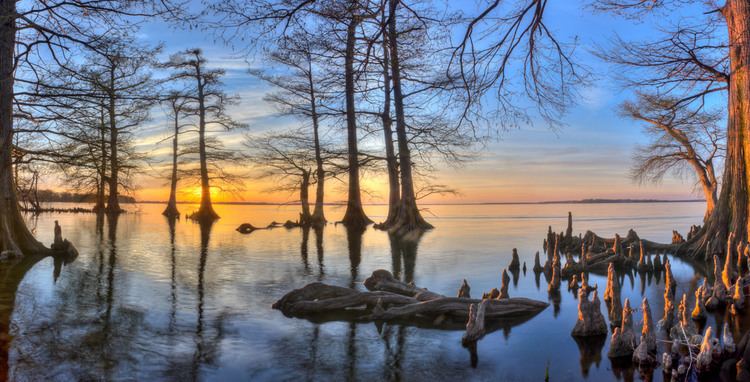
Big black crappie of spring reelfoot lake tn krappie kings s2 eps07
History
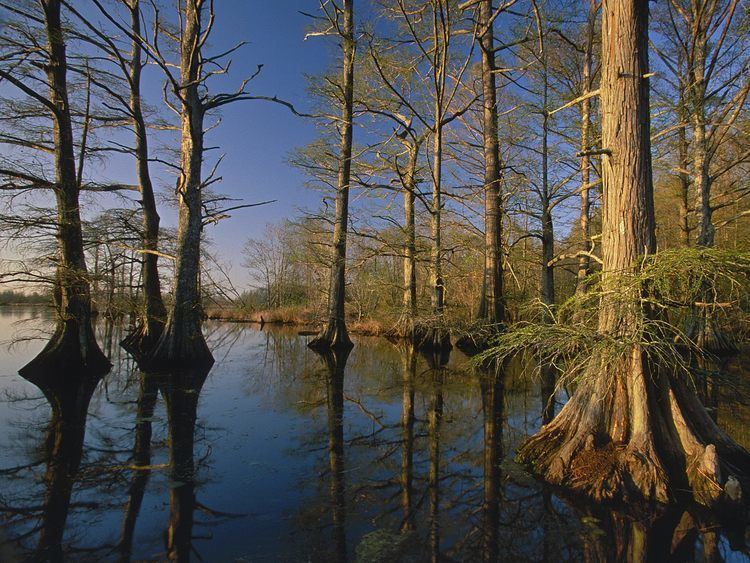
According to the United States Geological Survey, Reelfoot Lake was formed when the region subsided during the 1811–12 New Madrid earthquakes. The earthquakes resulted in several major changes in the landforms over a widespread area, with shocks being felt as far away as Quebec, Canada.
Nightriders
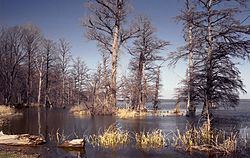
In the early 20th century, the Reelfoot area was marked by widespread lawlessness and "Night Riding," who were resisting a land development company's buying up land around the lake. The governor of Tennessee, Malcolm R. Patterson, ordered the state militia into the area to try to restore order. The troubles began when a group of landowners purchased almost the entire shoreline of the lake. They formed the West Tennessee Land Company to enforce what they saw to be their legal rights, including the ownership of the lake itself, and most importantly its fishing rights. Most of the Night Riders were from families who had derived much of their living from fishing the lake for generations, joined by their friends and supporters.

Two attorneys engaged by the West Tennessee Land Company to enforce its claims were seized by the Night Riders. A contemporary front-page account in the Nashville Banner tells that one lawyer, Captain Quentin Rankin, was murdered by being hanged and then shot, while the other, Colonel R. Z. Taylor — grandfather of author Peter Taylor — escaped by swimming across the lake in the dark while being fired upon by Night Riders. Colonel Taylor was first reported killed, but later was confirmed to have escaped. This violence in 1908 caused the governor to call out the militia to restore order. The alleged murderers were arrested, unsuccessfully tried, and charges were eventually dropped.

The governor soon declared the lake to be part of the public domain, which guaranteed the right of the public to use it regardless of who owned the land adjacent to it. A system of parks, wildlife refuges, recreation areas, and public boat ramps was eventually developed through federal-state cooperation.
Reelfoot Lake today
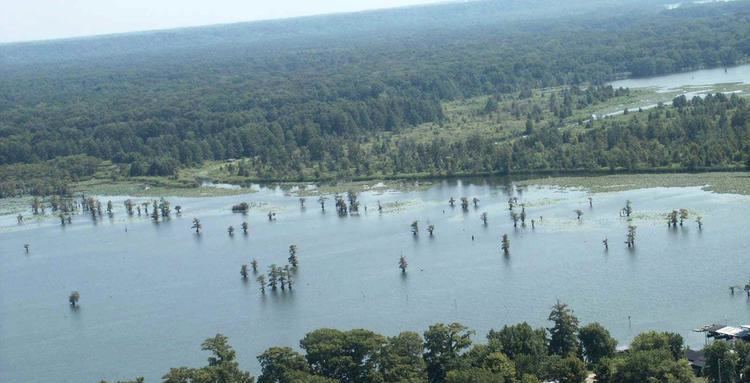
Reelfoot is the only large natural lake in Tennessee, and gives its name to Lake County, Tennessee, in which it is located. Until 2003, Reelfoot was the world's only legal commercial fishery for crappie, a species of sunfish. It was served in restaurants near the shore. The area is popular for recreational boating and fishing.
Since 1930, water levels in the lake have been regulated by the construction and operation of a spillway at the southern end, where the Running Reelfoot Bayou flows out of it. This structure was controversial when first built, and in 1939 local residents attempted to blow it up, unsuccessfully.
In the early 21st century, the 80-year-old structure was regarded as obsolete by both the United States Fish and Wildlife Service and the United States Army Corps of Engineers. They planned to replace it. A new spillway was completed in 2013 and became operational. This has helped regulate water levels and by doing so, helped the overall health of the lake and its inhabitants.
Poor agricultural practices have resulted in siltation of the lake occurring far more rapidly than it should. It was common practice for cotton and soybeans to be planted up to the water's edge until governmental agencies purchased the entire shoreline and forbade the practice. Siltation has been accelerated by the local custom of "burning out" the adjacent ditchlines every fall, increasing erosion and the transfer of soil to the lake.
Reelfoot Lake was the location for three movie productions: 1957 drama Raintree County, the 1967 Oscar-winner In the Heat of the Night, and U.S. Marshals.
The town of Samburg, Tennessee is the only incorporated municipality on the lake's shores.
The name
Reelfoot Lake is said to be named for an Indian chief who had a deformed foot and was nicknamed "Reelfoot" by settlers in the early 19th century. A Chickasaw legend states that the name originated from a prince of a Chickasaw tribe inhabiting the present West Tennessee, who was born with a deformed foot and walked with a rolling motion, so was nicknamed Kolopin, meaning Reelfoot. When he became chief, Reelfoot determined to marry a Choctaw princess, but her father would not permit it. The Great Spirit warned Reelfoot that if he attempted to kidnap the maiden, his village and his people would be destroyed. Reelfoot disobeyed the Spirit, and seized the princess by force and carried her to Chickasaw territory, where he arranged a marriage ceremony.
In the middle of the ceremony, the Great Spirit stamped his foot in anger, causing the earth to quake, and the Father of the Waters raised the Mississippi River over its banks, inundating Reelfoot's homeland. The water flowed into the imprint left by the Spirit's foot, forming a beautiful lake beneath which Reelfoot, his bride, and his people lie buried.
Other origins are also cited, for example, in his 1911 story "Fishhead," Irvin S. Cobb claimed the lake "[took] its name from a fancied resemblance in its outline to the splayed, reeled foot of a cornfield Negro."
Though the legend is about the Chickasaw and Choctaw tribes that once inhabited the area, these tribes left around the early 14th century, reserving this area as hunting grounds. Early maps of Tennessee, such as the Map of the Southern States of America, 1795, show the Red Foot River in the area where Reelfoot Lake was formed. In a later map, Tennessee and Kentucky 1835, drawn after the New Madrid earthquake, when the lake was formed, this was called Wood Lake because of all the standing trees in the water. It is likely then, that over the next few years (even before 1835), map makers separated the "d" in Red Foot and it became an "e" and "l", making it Reel Foot Tennessee 1827. According to the Matthew Carey map of 1796, the river is labeled Reel Foot River. This would imply that other map makers combined the "e" and "l" to make a "d" instead of the other way around.
